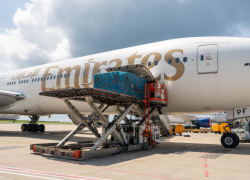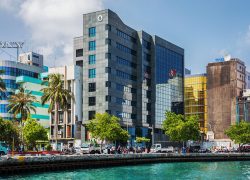International connectivity to the Maldives continues to strengthen, with a notable 5.6 percent increase in international flight movements recorded during the first half of 2025, according to the latest data released by the Maldives Monetary Authority (MMA). This uptick is viewed as a strong indicator of the nation’s robust tourism rebound and improving economic outlook, as the country gears up for its busiest travel period during the upcoming winter season.
MMA’s monthly statistics report shows that a total of 8,807 international flights both scheduled and general arrived and departed from the Maldives between January and June 2025. This figure represents a rise from 8,337 flights recorded in the corresponding period last year. The growth is largely driven by an increase in scheduled international airline operations, with 8,088 scheduled flights handled by June 2025, compared to 7,611 in the same period of 2024. These flights consist of commercial airline operations bringing in tourists and business travelers from key source markets across the globe.
Meanwhile, general aviation movements, which include private jets and chartered services, experienced a slight dip, decreasing from 726 flights in the first half of 2024 to 719 in 2025. However, this marginal decline is not expected to impact overall connectivity, especially as major international airlines expand their frequencies and routes to the Maldives ahead of the high-demand winter months.
Airlines such as Malaysia Airlines, Qatar Airways, and Virgin Atlantic have already confirmed increased flight schedules to cater to growing travel interest in the Maldives, further enhancing accessibility from Europe, the Middle East, and Asia. These additions are anticipated to support the government’s tourism target of attracting 2.3 million international visitors by the end of 2025.
As of the latest count, over 1.3 million tourists have arrived in the Maldives this year. With approximately one million more visitors needed to meet the annual target, authorities are optimistic that the surge in international air traffic, combined with the approaching peak season, will accelerate arrivals and contribute positively to the nation’s tourism receipts and broader economic performance.
The Maldives Monetary Authority continues to play a key role in monitoring aviation and tourism-linked indicators as part of its broader mandate to assess economic activity. The recent rise in flight movements complements the country’s strong fiscal planning efforts to diversify and strengthen foreign exchange reserves through sustained tourism growth. As the primary source of foreign currency inflow, tourism remains a cornerstone of the national economy, and these trends in air connectivity offer encouraging signs of continued momentum.
With strategic efforts by the government and tourism stakeholders, the Maldives remains on track to further consolidate its position as one of the world’s most sought-after luxury island destinations, now made more accessible through enhanced international flight operations.



 advertisment
advertisment




 advertisment
advertisment





